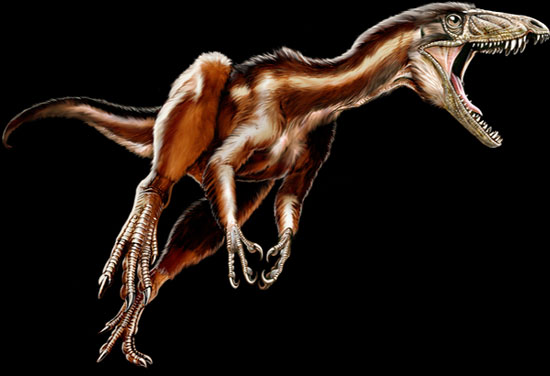Disaster sweeps 90% of dinosaurs are not serious?
Scientists say the severity of the biggest 'environmental disaster' in Earth's history with the cleanup of nearly 90% of dinosaurs, may have been greatly exaggerated.
A new study shows that the extinction occurred in the Permian-Triat century 251 million years ago, is not as bad as many people think. Many species continue to grow after this event.

Tawa hallae still grows later
catastrophic extinction in the Permian-Triat period. (Photo: Dailymail)
The catastrophe occurs when huge blocks of magma (hot melted rocks in the ground) explode in Siberia killing 96% of marine species and 70% of terrestrial species. Earth's biodiversity is heavily destroyed. Many studies claim that it takes between 15 and 30 million years for species to fully recover.
However, when conducting fossil assemblies in the middle and late Triassic period of Northeast Arizona, the science team from the University of Rhode Island found a small difference in genetic diversity.
Accordingly, underwater life has grown again within 5 million years.
Professor David Fastovsky said: 'The results show that this extinction event is not too serious for terrestrial organisms as previous studies have claimed. The consequences it leaves are not long and may be less than what has happened to aquatic species'. In addition, terrestrial creatures in Arizona seem to recover much faster than other parts of the world.
This finding does not affect our understanding of the recovery period of aquatic species, thought to be between 4 and 10 million years.
- Recreating the meteorite disaster 66 million years ago made the dinosaurs extinct
- 10 weird, hard to imagine dinosaurs
- Without a meteorite disaster, dinosaurs are still extinct
- Arctic dinosaurs are only 20 years old
- 10 misconceptions about dinosaurs
- What if dinosaurs live with humans?
- 70 million years old dinosaurs
- How does the dinosaur learn to fly?
- Erotic dance of carnivorous dinosaurs
- Disaster disaster
- 6 things you read about dinosaurs when you were young, but are no longer true
- Discovered 2 new dinosaurs that hurt archaeologists
 Discovered an ancient centipede fossil 99 million years old
Discovered an ancient centipede fossil 99 million years old Discovered bat-like dinosaurs in China
Discovered bat-like dinosaurs in China Discovered a 200-year-old bronze cannon of the coast
Discovered a 200-year-old bronze cannon of the coast Discover 305 million-year-old spider fossils
Discover 305 million-year-old spider fossils